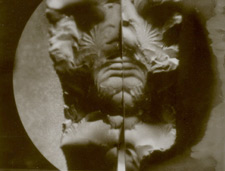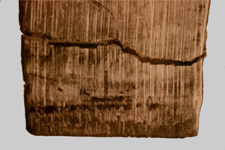- 01: Introduction
- 02: History
- 03: Propellants, Firearms, and Ammunition Development
- 04: Modern Firearms Manufacture
- 05: Small Arms Ammunition
- 06: Evidence Handling Procedures
- 07: Equipment and Instrumentation
- 08: Examination of Firearms
- 09: Cartridge and Shotshell Examination
- 10: Characterization and Evaluation of Fired Projectiles
- 11: Bullet Comparison and Identification
- 12: Gunshot Residue and Distance Determination
- 13: Toolmark Identification
- 14: Communicating Results
- Resources


Intercomparison of Fractured Objects
Home > Toolmark Identification > Toolmark Examination > Intercomparison of Fractured Objects

Fracture match in hard plastic
Click for larger imageIn addition to basic protocols for the examination of tools and the comparison of toolmarks, this section of the module outlines a protocol for the comparison of fractured items, typically brittle metal, plastic, and other materials thought to have once been joined as a single continuous object. Fractured knife blades, broken screwdriver tips, motor vehicle components (excepting glass), and many other similar items fall within this category. Examination and comparison of fractured items are not toolmark examinations within the narrow definition. However, they often involve the same evidence items that bear and produce toolmarks. Comparison microscopy is easily adapted to fracture matches (physical matches) using a reverse lighting technique.

Fractured tip of a screwdriver blade
Click for larger imageAt some point, the crystalline grain structure of an object will fail when sufficient force is applied to that object. This failure will occur along the repeating patterns of atoms in the crystal structure of the object. The failure will be random, unique, and microscopically observable.
Interestingly, when these random and unique failures occur, the high areas on the fractured surface of one piece correspond to the low points on the fractured surface of the other piece. When viewed physically side-by-side using a stereomicroscope, this is very apparent. Likewise, the fractured objects may be physically manipulated such that their previous association is apparent based on easily observable class characteristics and the outline of the two pieces at the point of the break.




